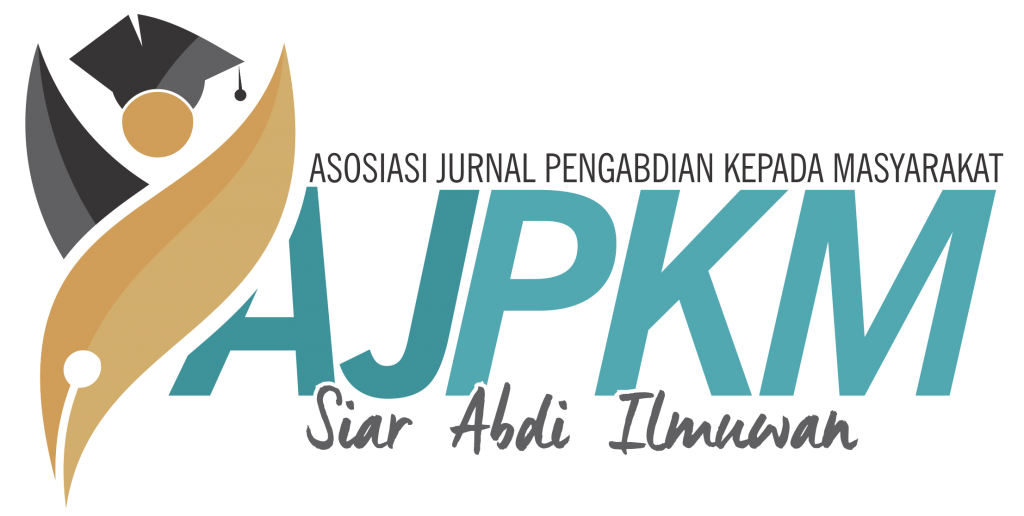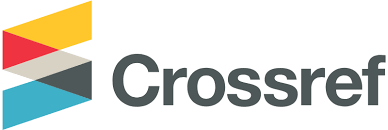UPAYA PENINGKATAN PEMAHAMAN GURU BAHASA INGGRIS SMA MENGENAI MODEL PEMBELAJARAN SASTRA BERBAHASA INGGRIS
Abstrak
Kata Kunci
Teks Lengkap:
PDFReferensi
Akbarian, I. (2010). A spice of classroom: Incorporating proverbial expressions in EFL classes. Journal of Asia TEFL, 7(1), 221–238.
Al Sabiri, A.R. & Kaymakamoğlu, S. E. (2019). A Study on the Views of English Literature Teachers about How to Teach English Literature: Libyan Higher Education Context. This Article Is Developed from an MA Thesis Which Was Written by Almakki Rumadhan Al Sabiri under the Supervision of Assist. Prof. Dr. Sibel Ersel Kaymakamoğlu and Presented at ICOPFE 2018. https://doi.org/DOI: 10.22559/folklor.951.
Alfauzan, A. H., & Hussain, A. G. (2017). Attitude towards and Perception of Literature in EFL Setting: A Case Study on QU Male Undergraduate Students. English Language Teaching, 10(1), 1–17. https://doi.org/10.5539/elt.v10n1p1
Aziz, M. A., & Nasharudin, S. N. S. (2010). An Investigation on Approaches Used to Teach Literature in the ESL Classroom: A Case Study of Sekolah Menengah Kebangsaan Taman Desa Skudai, Johor Bahru. (Unpublished).
Carter, R & Long, M. (1991). Teaching Literature. London: Longman.
Daşkına, N.C. & Hatipoğlu, Ç. (2019). A proverb learned is a proverb earned: Proverb instruction in EFL classrooms. Eurasian Journal of Applied Linguistics, 5(1), 57–88. https://doi.org/10.32601/ejal.543781
Delvi Wahyuni dan Witri Oktavia. (2018). PKM Kelompok Guru Bahasa Inggris Yang Mengalami Kesulitan Dalam Mengajarkan Puisi dalam Bahasa Inggris di SMAN 1 Ampek Angkek dan SMAN 1 Banuhampu Kabupaten Agam. Jurnal Pengabdian Kepada Masyarakat, 2(3).
Dhillon, K.K. & Mogan, S. (2014). Language-Based Approaches To Understanding Literature: a Creative Activity Module. The English Teacher, XLIII(2), 63–78.
Divsar, H., & Tahriri, A. (2009). Investigating the Effectiveness of an Integrated Approach to Teaching Literature in an EFL Context. Pan-Pacific Association of Applied Linguistics, 13(2), 105–116.
Dong, Y. R. (2005). Taking a Cultural-Response Approach to Teaching Multicultural Literature. English Journal, 94(3), 55. https://doi.org/10.2307/30046420
Duff, A. & Maley, A. (1990). (n.d.). Literature. Oxford: Oxford University Press.
Gözpinar, H. (2014). English Teachers’ Interest in Proverbs in Language Teaching. The Journal of International Social Research, 7(31), 611–617.
Hall, G. (2005). Literature and Language Teaching: A guide for Teachers and Trainers. United Kingdom: Palgrave MacMillan.
Halma Zakiyah dan Delvi Wahyuni. (2020). An Evaluation of Poems in English Taught to Indonesian Senior High School Students. Journal of English Language Teaching, 9(1), 252–258.
Hassan, K. M. (2018). Difficulties Facing English Teachers in Teaching Literary Texts at Higher Secondary Level in Bangladesh. English Language and Literature Studies, 8(3), 15–26. https://doi.org/10.5539/ells.v8n3p15
Healy, S. (2010). Literature in the EFL Classroom From theory to practice. Retrieved from https://ksu.repo.nii.ac.jp/dspace/bitstream/10965/347/1/AHSUSK_HS_42_178.pdf.
Hwang, D., & Embi, M. A. (2007). Approaches Employed By Secondary School Teachers To Teaching the Literature. Jurnal Pendidik Dan Pendidikan, Jil. 22, 1–23.
Indrawati, S. (2019). Students’ Understanding on Proverb: A Study of Learning in School. Proceeding of The 28 International Conference on Literature: “ Literature as A Source of Wisdom,” 342–349.
Iskhak. (2015). The Application of Reader-response Theory in Enhancing Student Teachers’ Affective and Linguistic Growth: A Classroom Action Research in EFL Teacher Education in Indonesia. The English Teacher, 44(2), 43–57. Retrieved from http://search.proquest.com.virtual.anu.edu.au/docview/1711389274/fulltextPDF/5D05B29836A74980PQ/35?accountid=8330
Khatib, M. (2011). A New Approach to Teaching English Poetry to EFL Students. Journal of Language Teaching and Research, 2(1), 164–169. https://doi.org/10.4304/jltr.2.1.164-169
Kim, H. (2004). Integrating poetry and dialogue journal writing into EFL curricula. The Journal of Asia TEFL, 1(2), 83–108.
Kirszner, L.G. dan Mandell, S.R. (2000). Literature: Reading, Reacting, Writing. USA: Harcourt, Inc.
Lazar, G. (1993). Literature and Language Teaching: A Guide for Teachers and Trainers.
Mustakim, S.S., Mustapha, R., & Lebar, O. (2014). Teacher ’ s Approaches in Teaching Literature : Observations of ESL Classroom. Malaysian Online Journal of Educational Science, 2(4), 35–44.
Musthafa, B. (2015). Seven Issues And Dilemmas in Literature Teaching in EFL Context: Lessons from Indonesia. Indonesian Journal of Applied Linguistics, 4(2), 136–145. https://doi.org/10.17509/ijal.v4i2.690
Muthusamy, C., Salleh, S.M., Michael, A.S., Arumugam, A. N. & Thalayan, X. (2017). Methods Used in Teaching and Learning of Literature in the ESL Classroom and Adult Learners’ Attitude. Journal of Applied Linguistics and Language Research, 4(2), 17–25.Naznean, A. (2015). Difficulties in Teaching Idioms and Proverbs. Language and Discourse, 653–659.
Nobles, S.L. & Azano, A.P. (2016). Poetry Is Powerful: High School Students and Pre- Service Teachers Develop Literacy Relationships through Poetry. Teaching/Writing: The Journal of Writing Teacher Education, 5(1), 126–138.
Omar, Y. (2017). The Inclusion of Literature Components in Malaysian English Papers: the Challenges and Pros in Teaching and Learning. Al-Ta Lim Journal, 24(3), 174–186. https://doi.org/10.15548/jt.v24i3.335
Ortells, E. (2013). Teaching English as a foreign language in Spanish secondary schools: The value of literature. English Teaching, 12(1), 91–100.
Padurean, A. N. (2015). Approaches to Teaching Literature in EFL Classroom. Journal Of Romanian Literary Studies, (6), 195–200. https://doi.org/10.1017/CBO9781107415324.004
Peraturan Menteri Pendidikan dan Kebudayaan Republik Indonesia No 81a Tahun 2013. Implementasi Kurikulum.
Permata, N. & Hadiani, D. (2019). Pelatihan Bahasa Inggris Dalam Upaya Peningkatan Kemampuan Mahasiswa Bidikmisi Polman Bandung. Masyarakat. Jurnal Pengabdian Kepada, 2(4).
Rahmi, M. (2014). English Literature In Indonesian High School Curriculum: Are We Ready Yet? The 61 TEFLIN International Conference, 315–320.
Rashid, R.A., Vethamani, M.E., &, & Rahman, S.B.A. (2010). Approaches Employed by Teachers in Teaching Literature to Less Proficient Students in Form 1 and Form 2. English Language Teaching, 3(4), 87–99. Retrieved from www.ccsenet.org/elt
Savvidou, C. (2004). An Integrated Approach to Teaching Literature in the EFL Classroom. The Internet TESL Journal, Vol.X, No. Retrieved from http://itesl.j.oorg/
Silva Afdian dan Delvi Wahyuni. (2020). Indonesian Senior High School Students’Attitude towards Literature in English. Journal of English Language Teaching, 9(1), 160-172.
Tevdovska, E. S. (2016). Literature in ELT Setting: Students’ Attitudes and Preferences Towards Literary Texts. Procedia - Social and Behavioral Sciences, 23(2), 161–169. https://doi.org/10.1016/j.sbspro.2016.10.041
Trisnawati, R. K. (2009). Implementing Reader-Response Theory: An Alternative Way of Teaching Literature Research Report on the Reading of Booker T Washington’s Up from Slavery. Journal of English and Education, 3(1), 1–14. https://doi.org/10.20885/jee.vol3.iss1.art1
Utami, I. G. A. L. P. (2012). Learning English Through Poetry for Efl Students. Jurnal Bahasa Dan Seni, 40(1), 70–80.
Yimwilai, S. (2015). An integrated approach to teaching literature in an EFL classroom. English Language Teaching, 8(2), 14–21. https://doi.org/10.5539/elt.v8n2p14
DOI: https://doi.org/10.24198/dharmakarya.v10i2.28589
Refbacks
- Saat ini tidak ada refbacks.
##submission.license.cc.by4.footer##
Jurnal Ini Terindeks di:








